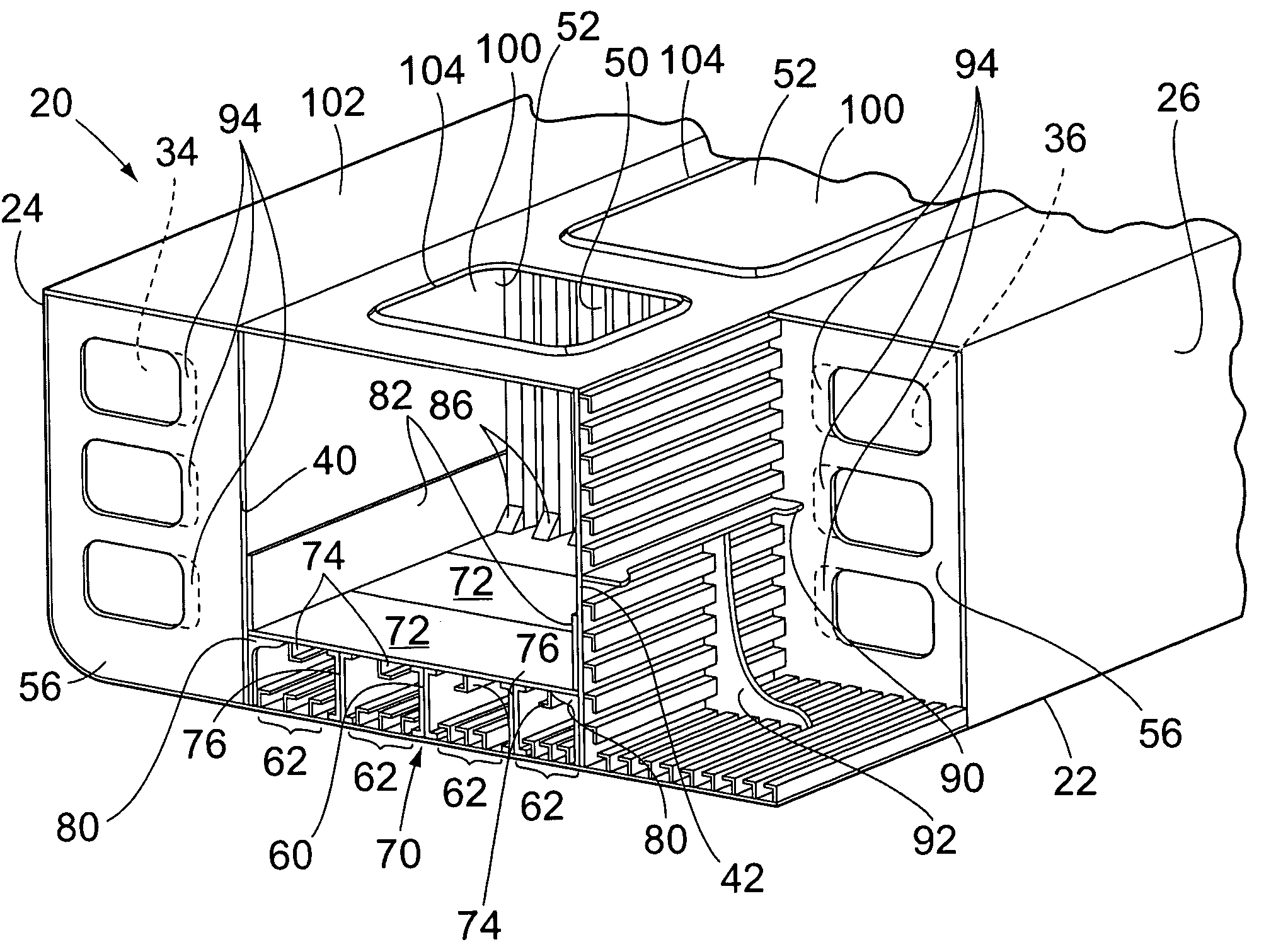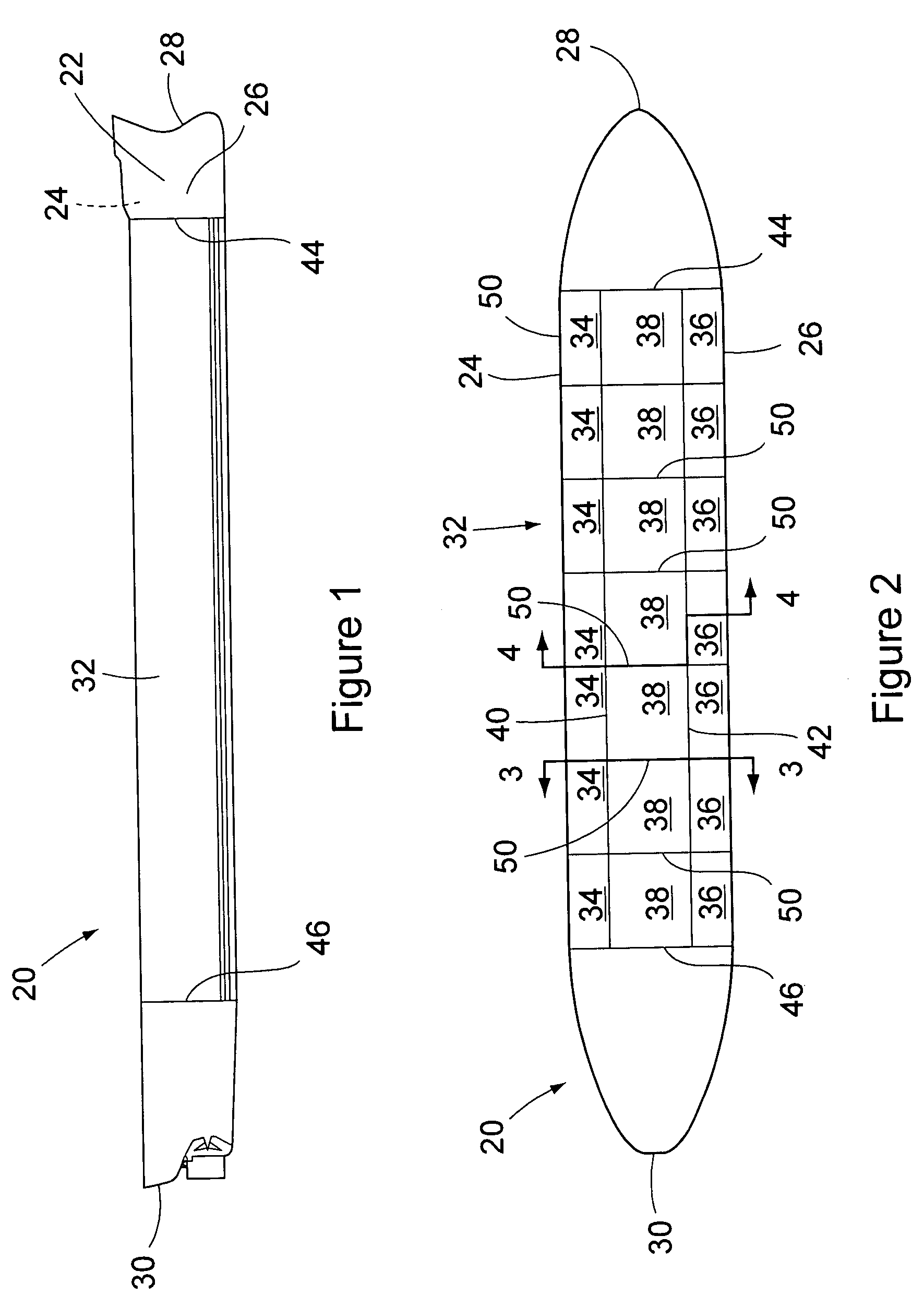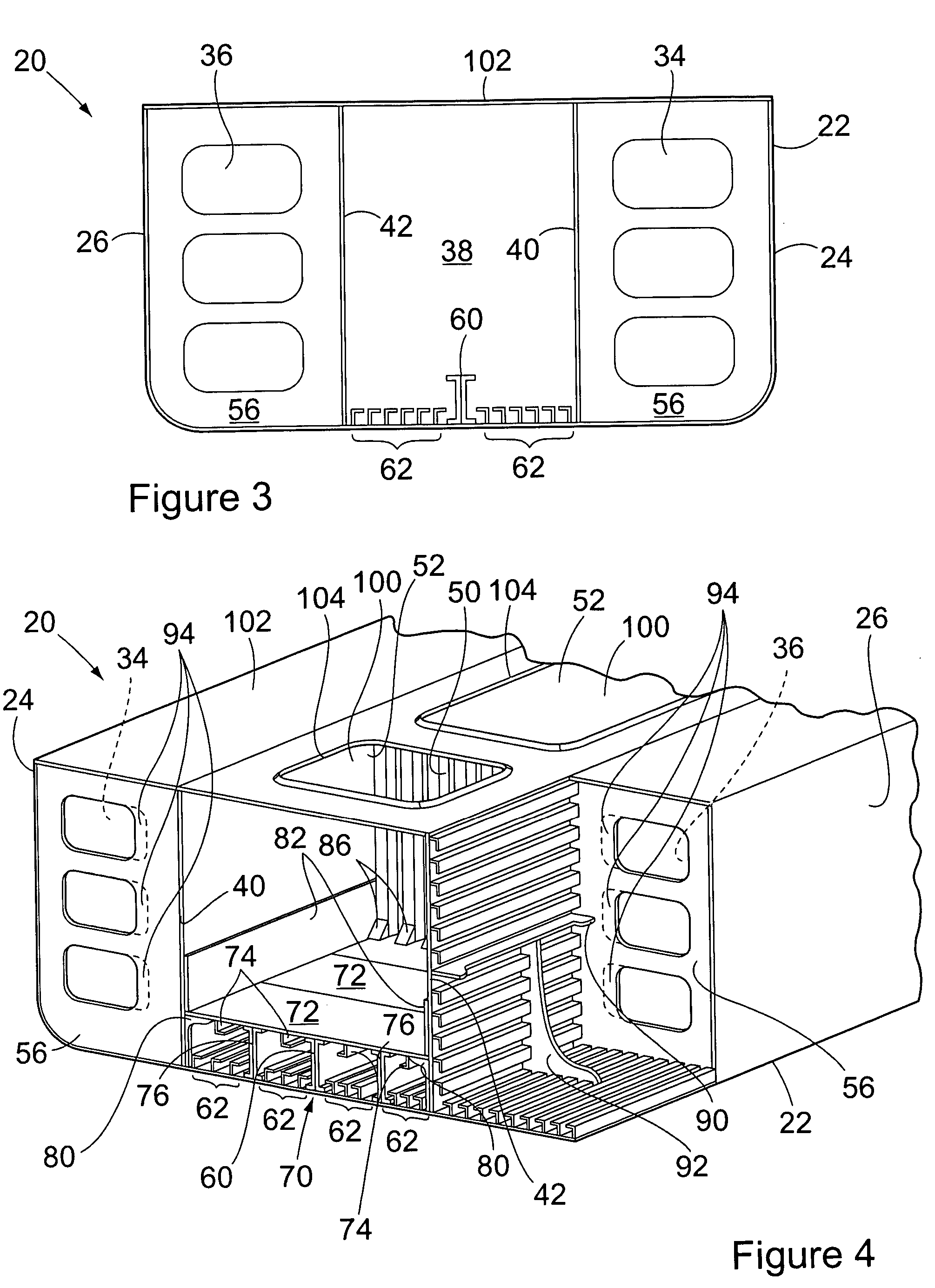Double-hull ore carrying vessel conversion from single-hull oil tanker and method of performing the same
- Summary
- Abstract
- Description
- Claims
- Application Information
AI Technical Summary
Benefits of technology
Problems solved by technology
Method used
Image
Examples
Embodiment Construction
[0023]FIGS. 1-3 show a single hull vessel 20 that may be converted using the principles of the present invention. The vessel 20 has an outer hull structure 22 generally defining the shape and body of the vessel to which the remaining structure of the vessel is attached. As is customarily known in the art, the vessel has port and starboard sides 24,26, a bow 28 and a stern 30 with an amidships portion 32 of the vessel therebetween. The vessel also typically has a pilot house, accommodations, rigging and deck structure. These structures have been omitted from the drawings for the purposes of simplifying the explanation herein.
[0024] The vessel 20 shown in FIG. 2 is a typical single hull oil tanker. In the amidships 32 portion of the vessel, the vessel has a port side wing tank 34 running longitudinally along the port side 24 of the vessel and a starboard side wing tank 36 running longitudinally along a starboard side 26 of the vessel. Between the port and starboard wing tanks 34,36, ...
PUM
 Login to View More
Login to View More Abstract
Description
Claims
Application Information
 Login to View More
Login to View More - R&D
- Intellectual Property
- Life Sciences
- Materials
- Tech Scout
- Unparalleled Data Quality
- Higher Quality Content
- 60% Fewer Hallucinations
Browse by: Latest US Patents, China's latest patents, Technical Efficacy Thesaurus, Application Domain, Technology Topic, Popular Technical Reports.
© 2025 PatSnap. All rights reserved.Legal|Privacy policy|Modern Slavery Act Transparency Statement|Sitemap|About US| Contact US: help@patsnap.com



